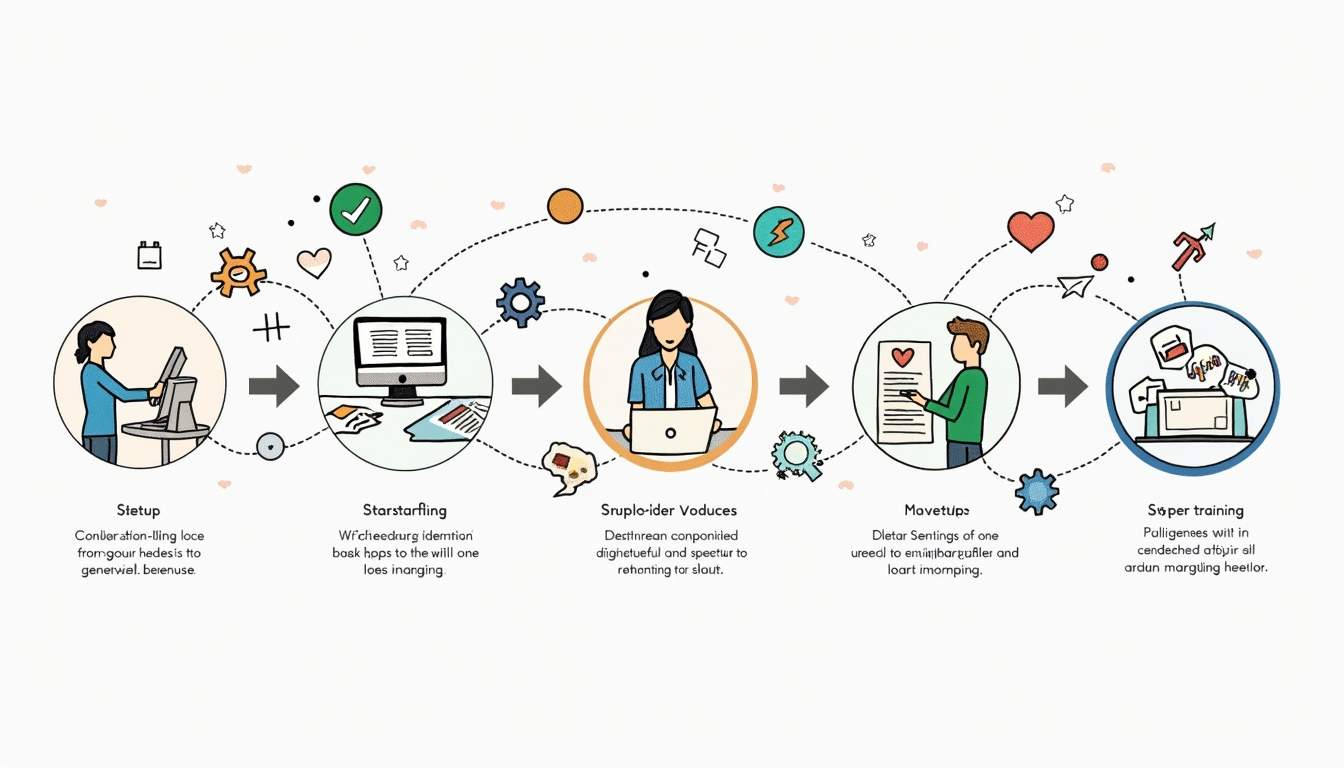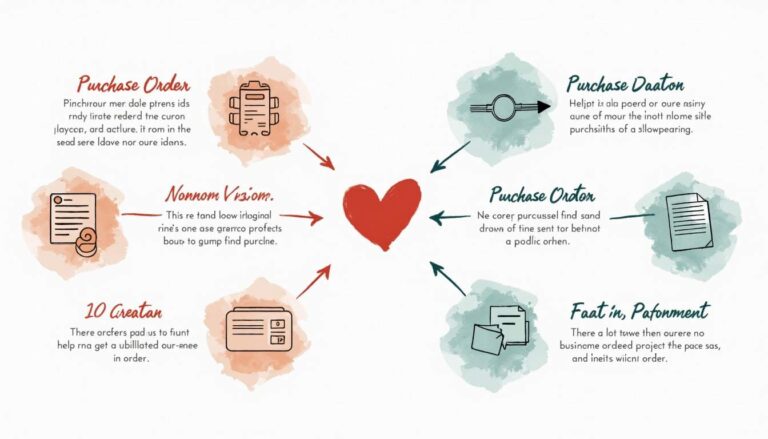In today’s fast-paced business environment, efficiency is key to maintaining a competitive edge. One of the critical components of operational efficiency is the order-to-cash (O2C) cycle, which encompasses everything from order placement to cash collection. Integrating QuickBooks into this process can significantly enhance efficiency, particularly when it comes to managing purchase orders. This article explores how businesses can maximize purchase order efficiency through QuickBooks integration, transforming their O2C cycle in the process.
Understanding the Order-to-Cash Cycle
The order-to-cash cycle is a fundamental process in any business that sells goods or services. It begins when a customer places an order and ends when the payment is received and recorded. Each step in this cycle is crucial, and inefficiencies can lead to delays, errors, and ultimately, unhappy customers. A well-optimized order-to-cash cycle not only enhances operational efficiency but also plays a significant role in improving customer satisfaction and loyalty, which are vital for long-term business success.
The Key Stages of the O2C Cycle
There are several key stages in the order-to-cash cycle that require careful management:
- Order Management: This involves receiving and processing customer orders accurately and efficiently. Effective order management systems can help track orders in real-time, allowing businesses to respond swiftly to customer inquiries and changes.
- Inventory Management: Ensuring that the necessary stock is available to fulfill orders is critical. Businesses must implement robust inventory tracking systems to prevent stockouts or overstock situations, which can disrupt the order fulfillment process.
- Invoicing: Timely and accurate invoicing is essential for cash flow management. Automated invoicing solutions can reduce human error and ensure that invoices are sent out promptly, fostering a quicker payment cycle.
- Payment Processing: Efficient payment collection methods can enhance cash flow and customer satisfaction. Offering multiple payment options, such as credit cards, digital wallets, and bank transfers, can cater to diverse customer preferences and expedite the payment process.
Each of these stages has its own challenges, but integrating QuickBooks can streamline the entire process, making it more efficient and manageable. Additionally, leveraging technology such as customer relationship management (CRM) systems can provide valuable insights into customer behavior and preferences, enabling businesses to tailor their offerings and improve overall service quality. Furthermore, regular analysis of the order-to-cash cycle can help identify bottlenecks and areas for improvement, ensuring that businesses remain agile and responsive to market demands.
The Role of QuickBooks in Purchase Order Management
QuickBooks is a powerful accounting software that offers a range of features designed to simplify financial management. One of its standout features is its ability to integrate seamlessly with purchase order processes. By leveraging QuickBooks, businesses can automate many aspects of their O2C cycle, leading to improved efficiency and accuracy.
Automating Purchase Orders
One of the most significant advantages of using QuickBooks for purchase order management is automation. Manual processes are often prone to errors, which can lead to costly mistakes. QuickBooks allows businesses to automate the creation and tracking of purchase orders, reducing the likelihood of errors and saving time.
With automated purchase orders, businesses can easily generate orders based on inventory levels or customer demand. This not only speeds up the process but also ensures that orders are placed when necessary, preventing stockouts or overstock situations. Additionally, QuickBooks can send notifications to relevant team members when orders are created or updated, keeping everyone in the loop and further enhancing operational efficiency.
Streamlining Communication
Effective communication is vital in the order-to-cash cycle. QuickBooks facilitates better communication between departments, suppliers, and customers. By integrating purchase order management with accounting, sales, and inventory systems, all stakeholders have access to real-time data.
This transparency helps in making informed decisions quickly. For instance, if a sales representative knows the current inventory levels, they can provide accurate delivery timelines to customers, enhancing customer satisfaction. Moreover, QuickBooks allows for the easy sharing of purchase order details with suppliers, enabling them to confirm orders swiftly and accurately, which can significantly reduce lead times and improve supplier relationships.
Furthermore, the software offers features that enable businesses to track the status of their purchase orders throughout the supply chain. This capability not only aids in managing expectations but also empowers businesses to proactively address any potential delays or issues. By having a clear view of the entire process, companies can enhance their negotiation strategies and build stronger partnerships with suppliers, ultimately leading to better pricing and terms.
Benefits of QuickBooks Integration
Integrating QuickBooks into the purchase order process offers numerous benefits that can transform the order-to-cash cycle. Here are some of the most significant advantages:
Improved Accuracy
Accuracy is critical in financial transactions. QuickBooks minimizes the risk of human error by automating calculations and data entries. This leads to more accurate purchase orders, invoices, and financial reports.
When businesses can trust their data, they can make better decisions, leading to improved operational efficiency and profitability.
Enhanced Cash Flow Management
Effective cash flow management is essential for any business. QuickBooks provides tools to track receivables and payables, allowing businesses to manage their cash flow more effectively. By integrating purchase orders with invoicing and payment processing, businesses can ensure that they receive payments on time.
This integration helps in identifying potential cash flow issues before they become significant problems, allowing businesses to take proactive measures.
Time Savings
Time is a valuable resource in any organization. By automating purchase order processes, QuickBooks helps businesses save time that can be redirected toward more strategic activities. Employees can focus on higher-value tasks rather than spending hours on manual data entry and order processing.
Moreover, with streamlined processes, businesses can fulfill orders faster, leading to improved customer satisfaction and loyalty.
Implementing QuickBooks Integration
While the benefits of QuickBooks integration are clear, implementing it effectively requires careful planning and execution. Here are some steps to consider:

Assess Your Current Processes
Before integrating QuickBooks, it’s essential to assess your current order-to-cash processes. Identify bottlenecks, inefficiencies, and areas for improvement. Understanding your current workflow will help you tailor the QuickBooks integration to meet your specific needs.
Choose the Right QuickBooks Version
QuickBooks offers various versions, each designed for different business needs. It’s crucial to choose the right version that aligns with your business size and requirements. Whether it’s QuickBooks Online, QuickBooks Desktop, or QuickBooks Enterprise, selecting the appropriate version is key to successful integration.
Training and Support
Once you’ve integrated QuickBooks into your purchase order processes, it’s vital to provide training and support to your staff. Ensuring that employees are comfortable using the software will maximize its benefits. Consider offering workshops, tutorials, and ongoing support to help staff navigate the new system effectively.
Measuring Success After Integration
After implementing QuickBooks integration, measuring its success is essential to ensure that the desired improvements in efficiency and accuracy are realized. Here are some metrics to consider:
Order Processing Time
One of the most straightforward metrics to track is the time it takes to process orders. Compare the time taken before and after QuickBooks integration to determine if there has been a significant improvement. A reduction in order processing time indicates enhanced efficiency.
Error Rate
Monitoring the error rate in purchase orders and invoices is another critical metric. A decrease in errors post-integration suggests that QuickBooks is helping to improve accuracy and reduce costly mistakes.
Customer Satisfaction
Ultimately, the goal of any business is to satisfy its customers. Gathering feedback through surveys or direct communication can help gauge customer satisfaction levels. If customers are happier with order accuracy and delivery times, it’s a clear sign that the integration is working effectively.
Common Challenges and Solutions
While QuickBooks integration can bring numerous benefits, it is not without its challenges. Being aware of potential obstacles can help businesses prepare and address them proactively.

Resistance to Change
Change can be difficult for employees accustomed to existing processes. Resistance to adopting new technology is common. To overcome this, involve staff in the integration process from the beginning. Communicate the benefits clearly and provide adequate training to ease the transition.
Data Migration Issues
Transferring data from existing systems to QuickBooks can pose challenges. It’s crucial to ensure that data is clean and organized before migration. Consider working with an IT professional or QuickBooks consultant to facilitate a smooth transition.
Integration with Other Systems
For businesses using multiple software solutions, ensuring that QuickBooks integrates seamlessly with other systems can be a challenge. Conduct thorough research to identify compatible tools and consider using APIs or third-party integration solutions to bridge gaps.
Future Trends in Purchase Order Management
The landscape of purchase order management is continually evolving, driven by advancements in technology and changing customer expectations. Here are some trends to watch:
Increased Automation
As technology continues to advance, the automation of purchase order processes will only increase. Businesses can expect to see more sophisticated tools that leverage artificial intelligence and machine learning to optimize order management further.
Real-Time Data Analytics
Access to real-time data is becoming increasingly important for decision-making. Future integration solutions will likely offer enhanced analytics capabilities, allowing businesses to gain insights into their order-to-cash processes and make data-driven decisions.
Enhanced Customer Experience
With the growing emphasis on customer experience, businesses will need to focus on providing seamless and efficient order management processes. QuickBooks integration will play a vital role in ensuring that customers receive timely updates and accurate information about their orders.
Conclusion
Maximizing purchase order efficiency is essential for businesses looking to streamline their order-to-cash cycle. QuickBooks integration offers a powerful solution to enhance accuracy, improve cash flow management, and save time. By carefully implementing this integration and measuring its success, businesses can transform their processes and ultimately provide better service to their customers.
As technology continues to evolve, staying ahead of trends and embracing automation will be crucial for maintaining a competitive edge in the marketplace. With the right tools and strategies in place, businesses can unlock the full potential of their order-to-cash cycle, driving growth and success for years to come.
Discover the Bellwether Advantage
Ready to take your purchase order efficiency to the next level? At Bellwether, we specialize in elevating your order-to-cash cycle with our cutting-edge purchasing and inventory management solution. Our platform is tailored to meet the needs of small and mid-size businesses, offering features like automated purchase orders, requisition automation, and advanced spend analytics. Don’t miss the opportunity to enhance your operational efficiency and reduce costs. Book a demo today and see how we can help you transform your procurement processes.







